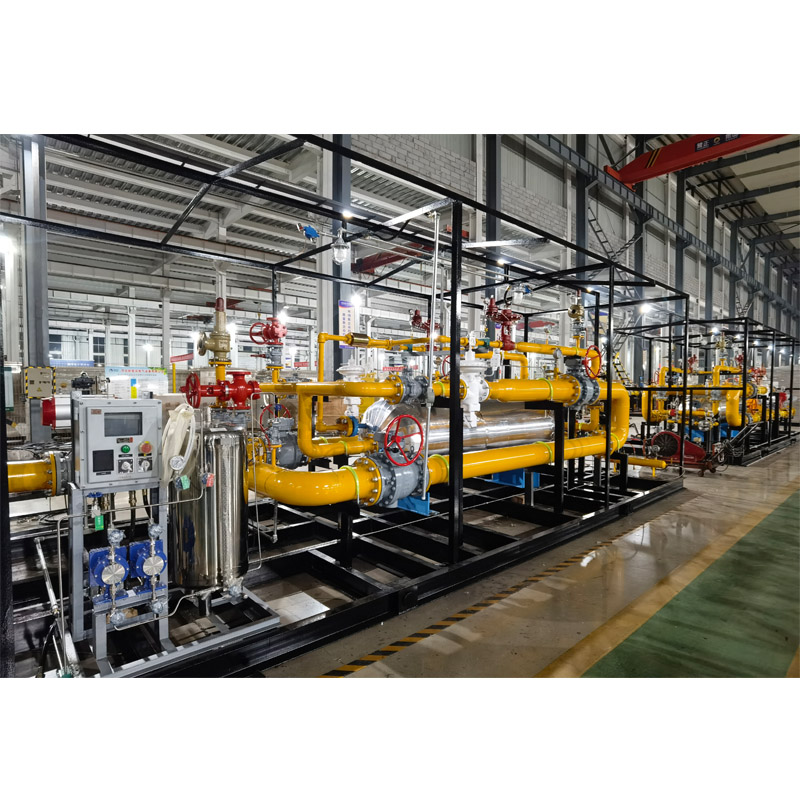
Nov . 10, 2024 14:28
Back to list
Understanding the Functionality and Applications of Pressure Reducing Regulators in Different Systems
Understanding Pressure Reducing Regulators Principles and Applications
Pressure reducing regulators (PRRs) play a pivotal role in various industries by ensuring the safe and efficient operation of gas and liquid systems. These devices are designed to control the pressure of fluids, whether gases or liquids, allowing them to remain at a stable level regardless of fluctuations in upstream pressure. In this article, we will explore the principles of pressure reducing regulators, their functions, and applications across different sectors.
Principles of Pressure Reducing Regulators
A pressure reducing regulator essentially functions as a control device that reduces a high inlet pressure to a lower, usable outlet pressure. At its core, it consists of two main components the sensing element and the actuator. The sensing element detects the downstream pressure and communicates it to the actuator, which adjusts the flow of the fluid in response.
The operation of a pressure reducing regulator is based on a mechanical principle known as feedback control. When the downstream pressure exceeds the set point, the actuator responds by reducing the flow of fluid, thereby lowering the pressure. Conversely, if the downstream pressure drops below the set point, the actuator allows more fluid to flow through. This continuous adjustment ensures that the outlet pressure remains consistent, despite variations in the input pressure.
Types of Pressure Reducing Regulators
There are various types of pressure reducing regulators, each designed for specific applications and pressure ranges. Some common types include
1. Single-Stage Regulators These are used for applications where the inlet pressure does not vary significantly, providing a straightforward and cost-effective solution.
2. Two-Stage Regulators Ideal for high-pressure scenarios, two-stage regulators offer improved pressure regulation by first reducing the pressure in an initial stage before further controlling it in the second stage. This design minimizes pressure fluctuations and enhances accuracy.
3. Dome Loaded Regulators These regulators utilize a diaphragm and a gas-filled dome to provide exceptional control in a range of applications, particularly in process industries.
pressure reducing regulators

Applications of Pressure Reducing Regulators
Pressure reducing regulators are crucial across various industries, including
1. Oil and Gas In the oil and gas sector, PRRs are essential for controlling the pressure of natural gas throughout pipelines, ensuring safe and efficient transmission.
2. Manufacturing In manufacturing processes, consistent pressure is required for machinery operation. PRRs help maintain this pressure, improving productivity and safety.
3. Medical In medical applications, such as oxygen delivery systems, pressure reducing regulators ensure patient safety by delivering the correct pressure levels of gas.
4. Water and Wastewater Treatment Water treatment facilities utilize PRRs to maintain optimal pressure levels for efficient water distribution and wastewater processing.
5. Heating Systems In HVAC systems, pressure reducing regulators help maintain the correct inlet pressure for fuel gases, ensuring effective and reliable heating.
Conclusion
Pressure reducing regulators are indispensable devices that contribute significantly to the safety and efficiency of fluid systems across various industries. By understanding their principles and applications, engineers and operators can make informed decisions regarding their implementation. As technology advances, we can expect further developments in pressure reducing regulator design, enhancing their capabilities and applications in increasingly complex systems. The fundamental role these regulators play in maintaining stable pressure levels cannot be overstated, making them a critical component of modern industrial infrastructure.
Latest news
-
Safety Valve Spring-Loaded Design Overpressure ProtectionNewsJul.25,2025
-
Precision Voltage Regulator AC5 Accuracy Grade PerformanceNewsJul.25,2025
-
Natural Gas Pressure Regulating Skid Industrial Pipeline ApplicationsNewsJul.25,2025
-
Natural Gas Filter Stainless Steel Mesh Element DesignNewsJul.25,2025
-
Gas Pressure Regulator Valve Direct-Acting Spring-Loaded DesignNewsJul.25,2025
-
Decompression Equipment Multi-Stage Heat Exchange System DesignNewsJul.25,2025

